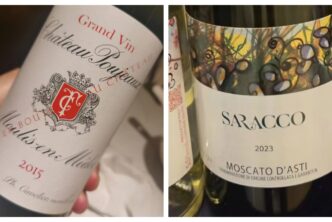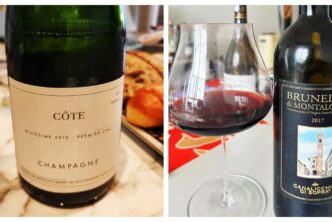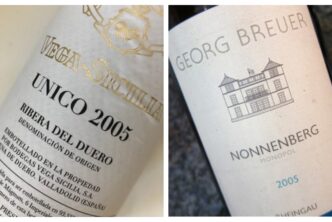Saracina 2018 Red Field Blend Winter’s Edge Mendocino County 90
by Robert Millman
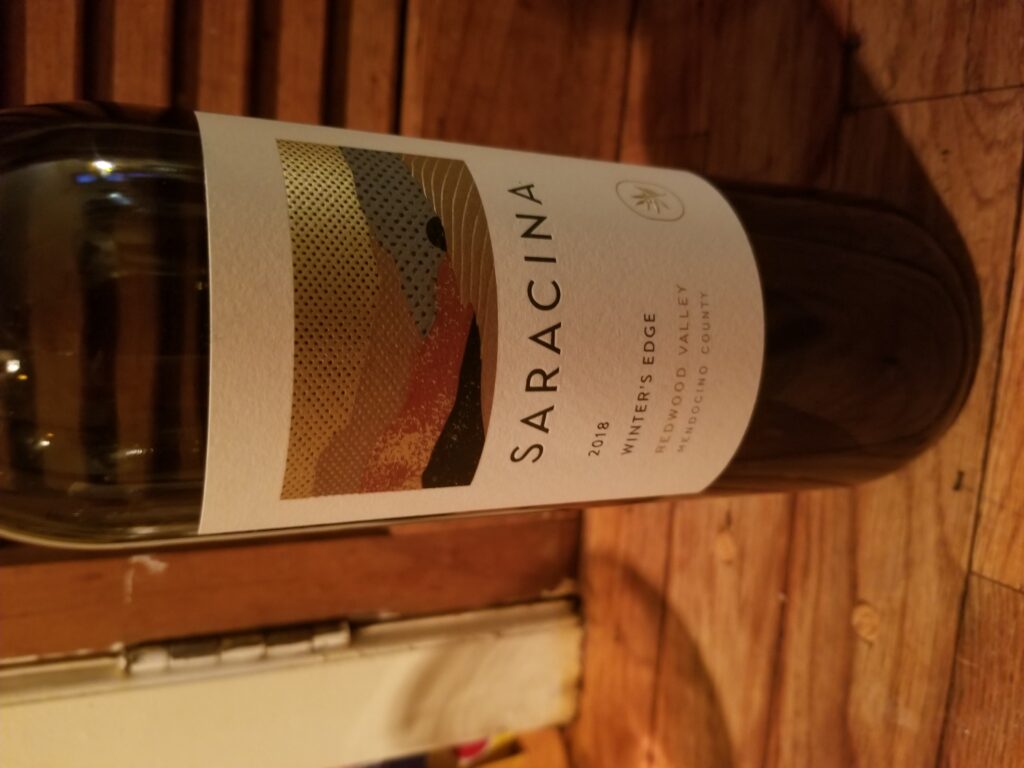
In what I could title the “magic of aeration”, the crucial role of sufficient aeration in drinking young red wines was brought home to me recently when I tasted, just after opening, a bottle of a high acid California field blend. The wine is 50% Grenache (not typically a high acid grape variety) with a large percentage of Carignan and a little French Colombard. The key to the acidity lies in the terroir of the grapes, picked from grapevines which date back to 1944. The low-yielding fruit is harvested under cool conditions; 80% of the bunches are fermented whole-berry after destemming, and malolactic fermentation took twelve months to complete (I believe that gives the reader some idea of the acidity in the juice). The wine was the aged in older French barrels for nineteen months (interestingly, because field blends rarely get this sort of Grand Cru treatment. Back to tasting the wine: I was initially struck, and a little bothered by, the active, dominant, acidity in the wine. I said to my tasting companion that this was in effect a white wine with a red color. It absolutely required food to offset the acidity, in fact I think it is an ideal red for a creamy cow’s milk cheese. Alas, we did not have any on hand (you know, sometimes tasting wine all by itself can be a very difficult business). I decided that perhaps the best thing I could do in order to do true justice to the wine (and to my palate) was to cork the bottle up, take it home and see what happened the next day. Much to my delight and even a little surprise, the wine was far more drinkable nineteen hours later. The fruit had emerged, and this helped balance the acidity. The wine had gone from being an interesting if not altogether convincing experience to a quite agreeable one. Most importantly, it made clear just how important air is in allowing a wine to become itself. The bottle, especially in a wine recently imprisoned as it were after sitting for quite some time in a relatively large container (a small barrel holds the equivalent of nearly 300 bottles), is largely anaerobic. It has to be that way if the wine is to age successfully. We speak of letting wines, especially young ones, breathe, and this was driven home to me in a most vivid fashion. It is well known that young Nebbiolo based wines need all the help they can get from oxygen. The custom in Piemonte is to open a young Barolo in the morning to dink in the evening. Decanting is a useful way to allow the wine to wake up from its confinement and emerge awake.
The problem with tastings is that the taster rarely has the opportunity to spend much time with the wines. Clearly, this state of affairs tends to favor softer, richer wines, especially when young. Even the experienced taster has to fight the hedonic inclination of preferring accessible, flattering wines. This is why we age wines, if possible, often for a minimum of ten years in a good cellar before opening them. The wine I ended up liking, called Saracina, does not need ten years of bottle aging: Decanting the wine for twelve hours or more will allow all the attributes of the wine to emerge. The fruit comes from two single vineyards in Mendocino County, and is quite unlike the richer, more voluptuous wines from warm sites in Napa and southern Sonoma. Its vigorous acidity, crunchy red fruits and energetic finish make it an excellent choice for lovers of red wines who like the bracing freshness usually found in white wines. Please remember to give it air-time! Drinking Window: 2022-2026.
Clos du Mont-Olivet 2018 Châteauneuf-du-Pape La Cuvée du Papet 96
by Ian D’Agata
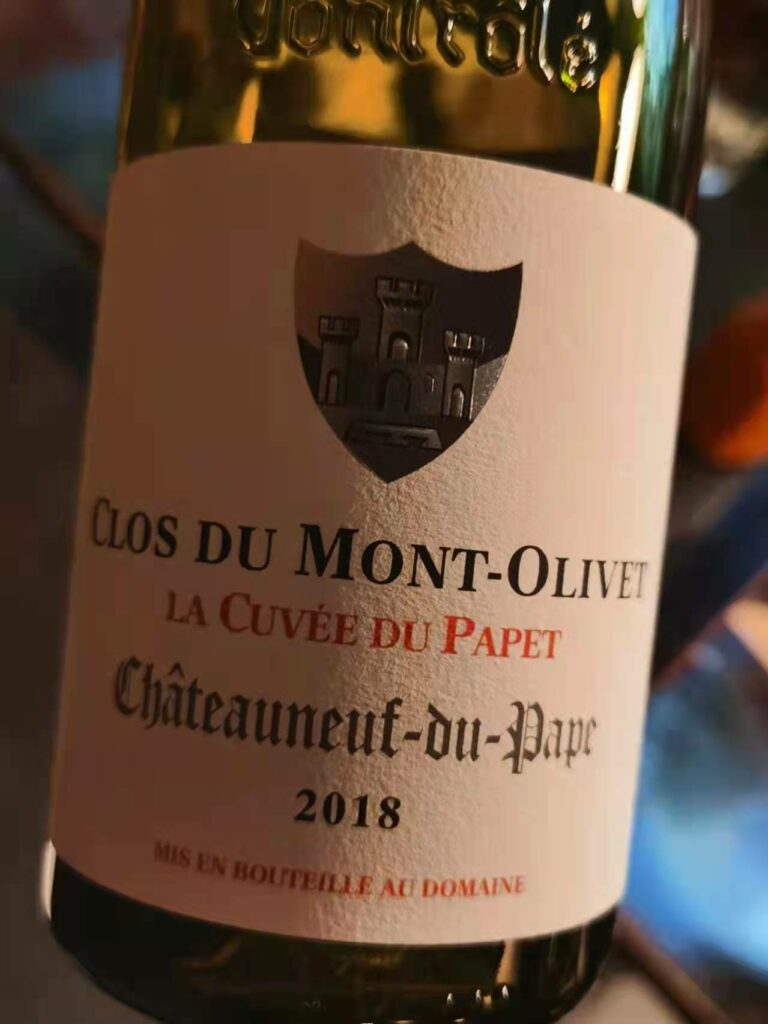
Every once in a while you come across a wine that right awy, at first sip, you realize has greatness written all over it. This is actually often the case with Châteauneuf-du-Pape (CDP), where there is no shortage of talented producers: Château Rayas, Château de Beaucastel, Château de Nalys, Domaine de Pegau, Domaine du Vieux-Telegraphe, are just some of the many fantastic names producing world-class wines. And such is also the case with Clos du Mont-Olivet, a stellar property, and the 2018 Châteauneuf-du-Pape La Cuvée du Papet, their top CDP, which is just smashingly good. First produced in 2005 in honour of current owner Thierry Sabon’s grandfather, Joseph Sabon, the wine showcases to full effect the Clos du Mont-Olivet house style of perfume and finesse over brute power and overripe aromas and flavours.
Clos du Mont-Olivet is one of the region’s best producers, and if you didn’t know, then it becomes immediately evident with this beautiful wine. A very traditional address, the estate boasts fifteen vineyard plots located mostly in the northern and eastern part of the Châteauneuf-du-Pape appellation with the Grenache, Mourvedre and Syrah and the other six red grape varieties that are part of the CDP red blend planted on a highly diverse soils (clay, sand and the famous galets roulés so characteristic of the CDP’s Appellation soils. At Clos du Mont-Olivet a minimalist but not dogmatic approach to viticulture and winemaking are employed: vine rows are plowed to control weeds, no pesticides are used, indigenous yeasts are used with vinification in cement tanks, while the wines are aged in a combination of older large oak barrels of varying sizes (used depending on the wine and vintage). Wines are bottled unfined and unfiltered. The ‘Cuvée du Papet’ is made from the estate’s oldest Grenache vines, many of which were planted in 1901, and is produced only in the best vintages and was born out of the desire to choose the best of our different vineyards including Montalivet, Les Gallimardes and Les Serres, to produce a wine of great perfume, complexity and power. The Clos du Mont-Olivet 2018 Châteauneuf-du-Pape La Cuvée du Papet is a deep, vivid purple-ruby in colour. The nose is at once profoundly perfumed and refined, with penetrating stem-accented aromas of blackcurrant, black cherry, minerals, violet, herbs, sweet spices, tar and black pepper. Fresh and precise on entry, then tapered and just as precise in the middle, its rich but lifted floral flavours of dark fruit and steely minerality linger long on the vibrant, very pure aftertaste which hints at a little bit of tobacco and cocoa. Can be enjoyed now but will be best in about four years time, and for another fifteen after that. Drinking window: 2026-2036.

 中文
中文
